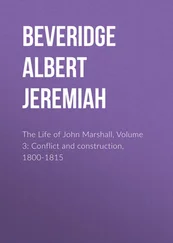It would, however, be a mistake to attempt to draw a clear distinguishing line between those collocations that are predictable from the meanings of the words that co-occur and those that are not. […] For one can, with varying degrees of plausibility, provide a semantic explanation for even the more restricted collocations, by assigning very particular meanings to the individual words. (Palmer 21981: 77)
Furthermore, he suggests subdividing collocational restrictions into three types: combinations which are very unlikely to occur because of the items’ individual semantics, such as green cow (type 1); collocations which only admit a certain collocational range such as pretty , which, in its attributive use, seems to be restricted to any noun with the inherent concept of femininity (type 2); and very strict restrictions which only allow a certain collocate in order to express a certain concept, such as rancid for bacon which is not fresh anymore (type 3) (Palmer 21981: 79). This introspection, however, leads Palmer to a very conservative reading of a word’s meaning and its combinatorial properties. A BNC query – admittedly a tool which was not available at that time – for pretty or rancid yields a plethora of examples which Palmer would have classified as unacceptable, such as rancid Stilton (BNC CHA 4470), rancid words (BNC HNJ 309) or pretty boys . In fact, it is especially these more or less unexpected uses that demonstrate the scope of interpretative value which accompanies a combinatorial choice like in (18) or (19). For it is the implied aspect of femininity which gives boys in (18) a kind of androgyne flavour1 and makes pretty boy in (19) a provocation, implying in this case unwanted homosexual tendencies, rather than a regular address. The same works of course for rancid which, as the Oxford Advanced Learners Dictionary (OLAD) points out, can refer to any kind of fat which “[…] tastes or smells unpleasant because it is no longer fresh” (OALD 7: rancid ). Therefore, one would expect rancid Stilton to have a different olfactory quality than mouldy or smelly Stilton , the latter being rather a default feature of this type of cheese. This study will therefore refer to accepted alternations, which, so to say, belong to the same lexical set , as variation or established alternations , while combinations which might seem acceptable but potentially need some more interpretation will be called creative alternations . Of course, one could argue that these more creative uses of a collocate are, to a certain degree, just metaphorical extensions from the fully accepted collocation, but these readings seem to live on within more creative combinations. To a certain extent, this makes Palmer’s typology of collocational restrictions superfluous, first and foremost because, as Herbst stresses, an image such as green or purple cow might seem unusual but is in no way related to any language-inherent restrictions (Herbst 1996: 386). Especially in fields like literature, news, advertising or internet-talk one might come across the most unusual combinations. However, just because a green cow is a phenomenon one might not simply encounter on a trip to the countryside, this does not mean that, within the right context, it is not as acceptable as a red dragon or a blue unicorn . So the imaginary nature of the concept as such cannot and should not influence a linguistic analysis of restricted language use. Collocational restrictions like type 2 and 3, on the other hand, paint a more diverse picture than Palmer leads his readers to believe. One, because his supposed restrictions yield actual instances within a modern corpus like the BNC, but also because in some cases these more or less unconventional combinations add a new semantic dimension to the concept of collocation.
The mere fact that these interpretations exist shows that under certain circumstances collocates could contribute their own level of meaning. To some degree, this is of course something most words do, but what is striking here is that this additional reading seems to stem from more prototypical and generally accepted collocations a word has been used in before, like ‘+ female’ from pretty girl or ‘+ fat that is not fresh anymore’ from rancid bacon . This, however, yields two questions: first, whether these additional semantic dimensions are inherent knowledge which all native speakers of a language share and also whether they all share the same understanding and interpretative boundaries. Furthermore, it is also questionable whether, assuming this phenomenon of collocational meaning transfer exists, it is a feature of the collocation or rather a reinterpretation furthered by other factors such as context2 or a kind of no-nonsense3 principle (Clark/Clark 1977: 72–73). Hausmann (1984), for example, also acknowledges a kind of more or less creative, even pun-like use of collocational structures. However, here they stand in contrast to institutionalised co-occurrences like collocations, which, according to his typology, consist of one freely selected ( base ) and another restricted element ( collocator ), whereas counter-creations , as he calls the more creative, collocationally inspired co-occurrences of words, are freely selected and characteristic of a more individual, rather literary style (Hausmann 1984: 399).
As has been mentioned before, Hausmann would presumably label examples (18) and (19) as counter-creation . But each of these sentences contains a euphemistic or even cynical tone, created by a somewhat creative use of [ pretty +N]. Thus, it is questionable whether these instances of [ pretty+ N] are anything more than instances of one author’s unique and individual style. As ever, so often the choice of collocates within a collocation and their general acceptance by a language community might be subject to gradience, with highly frequent and well-established instances like pretty girl at one and pretty man at the other end of the spectrum (Klotz 1998: 88–95, Herbst 1996, Palmer 21981: 75–79). Yet, the choice of one collocate alone already seems to guide the recipient’s thoughts towards a certain interpretation for the second part of a collocational pair. Thus even rather unusual fillings for the second collocate, like boy or man , which at first glance might not seem to fit the semantics of a collocation, can be interpreted against the backdrop of its more established reading. This yields the question whether readings such as [ pretty+ N ] or [ rancid+ N ] work with any filling for the [N]-slot as long as it does not contain a semantic feature which actively prevents an even more creative reading (cf. Bybee/Eddington 2006). Bisecting established and creative alternations into two different phenomena, however, disguises the fact that both cases might refer to the same, to a certain extent prototypical, reading (cf. Bybee 2013).
This interpretation is similar to a phenomenon Sinclair (1991, 1987b) observed during his corpus research; studying lexical patterns such as set in or happen , he realized that they are almost exclusively connected to a negative NP such as impoverishment or accident (Sinclair 1991: 73–75, 111–112). This led him to the conclusion that there might be an additional semantic-pragmatic level, which requires a certain semantic quality, for collocates of a node. In an analogy with phonology4, Louw (1993) later coined the term semantic prosody for this sort of “consistent aura of meaning with which a form is imbued by its collocates” (Louw 1993: 157). Several publications have defined, analysed and re-defined semantic prosody since, amongst them Stubbs (2001, 1995) and Bublitz (1995), who contributed several sample analyses, Partington (2004, 1998), Tognini-Bonelli (2001) and Xiao and McEnery (2006), who approached the subject from a contrastive, partly pedagogic perspective as well as Hunston (2007) and Stewart (2010), who tried to structure some of the terminological debate. But besides a general understanding which assumes that semantic prosody is a meaning-related phenomenon which can be observed across different established alternations of a collocation, there are also points of disagreement (Hunston 2007: 250). Since most of these aspects are also going to be relevant for the study at hand, the next lines will outline these aspects against the backdrop of established and more creative alternations of collocations.
Читать дальше
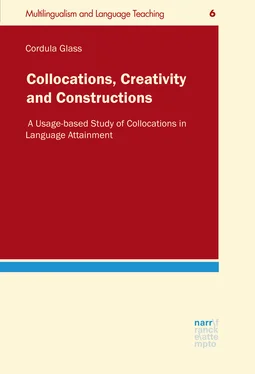

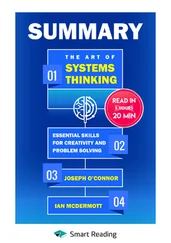

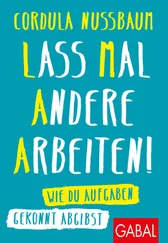

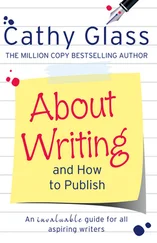

![Chade-Meng Tan - Search Inside Yourself - Increase Productivity, Creativity and Happiness [ePub edition]](/books/703803/chade-thumb.webp)


